Nudging Clients In The Right Direction To Give Them What They Want
“How did you do that?” My colleague Leigh sounded impressed. He had been working with a problem client for weeks trying to get design approval. Then I came along and was able to get signed-off in a single conference call. “Can you teach me how you did that?” he asked. I mumbled something about years of experience, but the truth was I didn’t have a clue. It just seems I can find design approval easier than most.
As I thought about it I realised there are actually quite a lot of things that have become second nature for me over the years. But I have learnt the hard way through many painful projects. Unfortunately because I started designing websites back in 1994 there was nobody around to teach me this stuff. I wish somebody could have just shown me how to avoid all of those endless revisions. Hopefully some of the advice I share with you here can help you avoid years of pain and suffering.
My first piece of advice focuses on the old adage — prevention is better than cure.
Prevention Is Better Than Cure
In our enthusiasm to start a project we often don’t take the time to prepare the client. For many clients this will be their first web project. So they may not really understand what that involves or what their role is.
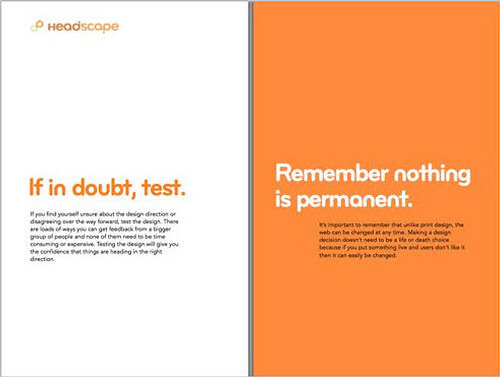
So before you leap into your next project, let me recommend you complete the following steps:
- Educate the client about their role. Take the time to explain to the client what you expect from them. I always make the point of telling our clients to focus on problems, not solutions. I encourage them to avoid making design suggestions, but rather to point out why they feel a design is wrong. The job then falls onto us to come up with the right solution for their problem.
- Take the client through a process. Because many clients are not familiar with the Web design process, take the time to explain it. This has two benefits. When people are in unfamiliar territory they attempt to take control. This leads to micromanagement. By explaining your process you reassure them, giving them confidence. Second, explaining your process demonstrates you are the expert and puts you in the driver’s seat.
- Pre-empt common issues. We all know there are certain issues that always come up. Things like “make my logo bigger”, “can we use comic sans?” or “put everything above the fold” have become standing jokes in the Web design community. Why then would we not pre-empt these issues? By talking about them upfront it makes it much harder for the client to mention them later. After all, none of us likes to be the person who is predictable, making the ‘dumb’ request.

Even once your project is up and running prevention can still be better than curing. For example, when you complete a design and show it to the client you can do a lot to prevent problems from coming up.
First, you should always present the design. This is your chance to justify your approach. Refer back to previously agreed upon work. If you have used moodboards, point out how the design draws on them. The same is true for wireframes, personas or any other elements the client has signed off on. It’s hard for the client to reject a design built on elements they have already agreed upon. You must never hand over a design without explanation.
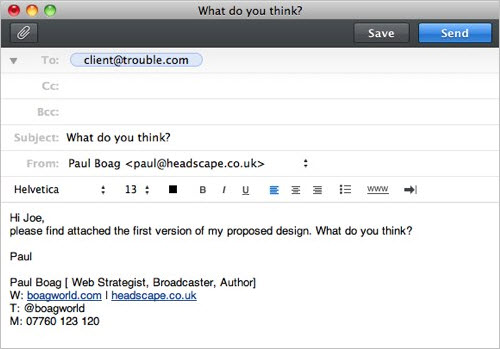
Secondly, be aware the client may show the design around. This is problematic. Although you may have been careful to explain the decision making process to the client, others will not have this background information. This inevitably means the third parties will fallback on personal opinion and potentially sway the client in the wrong direction.
The solution to this problem is not to present your design as either a static image or as a final webpage. Instead, record a short video talking the client through the design. This video can then be passed on to whoever the client wishes to show. That way whoever views it will get all the information they require to provide educated feedback.
Finally, control the kind of feedback you receive. Never ask a client what they think of the design. Ask them instead how they believe their users will react to the design or whether it meets their business objectives. You can even go as far as asking them whether the design reflects the signed-off moodboards or wireframes. If you can get them saying yes to these questions they will realize that even if they personally dislike the design it is still the right solution.
Of course, when I was able to get the design signed-off on Leigh’s project, I hadn’t had a chance to lay down any of this groundwork. So what other factors came into play that made me successful where he had failed? One was my attitude going into the discussion.
Get Your Attitude Right
Leigh had been trying to get design sign-off for weeks. Both he and the client were frustrated. Battle lines had been drawn despite the fact both sides wanted the project completed.
This is a common problem. We start to see our clients as the enemy. In fact, there are many cases where bad past experience puts us on the defense from the outset. At every turn we start to build into our controls the limitations for the number of iterations and endeavors of the client’s influence. We even moan to one another how life would be better without clients.

It’s not surprising that design sign-off becomes a battle. We are looking for a fight even before we begin. It’s vitally important that we change this mindset and see every new client relationship as an exciting opportunity and not as a potential point of conflict.
When dealing with Leigh’s client, I had the advantage of not being on the defensive. My ego had not been bruised by rejection. You need to leave your ego at the door. Often it is worth picking your battles and letting the client win from time to time. This helps them feel their contribution is worthwhile and valued. It is when the client feels ignored or isolated from the process that conflict arises.
By getting your own attitude right, this goes a long way to establishing a good relationship with the client. This is key to successful design sign-off.
Get The Relationship Right
We would love to deny that the client is an intrinsic part of the Web design process. However, you can be the best Web designer in the world, but if the client isn’t on your side, you are wasting your time and ultimately the project will cost you money.
In theory we should all be experts in establishing good relationships with our clients. After all, we pride ourselves on empathizing with users and understanding their motivation and needs. We should then be able to apply these same skills to our clients. If we then understand their needs and motivations, it is much easier to establish a good relationship.
Working closely with them helps. The temptation is to hold the client at arm’s length and minimize their involvement in the project. However, if you want to get the client on board, you are better off working with them collaboratively. This means they will feel a sense of ownership over the design, and are more likely to sign off on it.
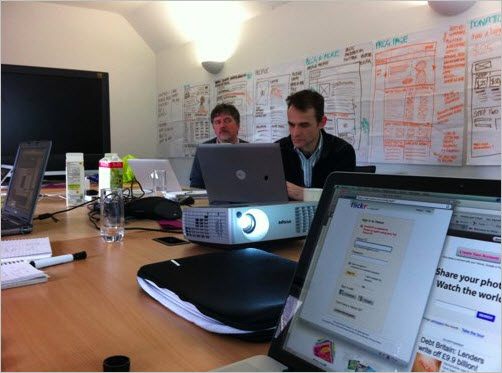
The other advantage of collaboration is that it makes the client feel important. It provides them with a sense of purpose in the relationship rather than just being a spare part to rubber stamp your decisions. I tell clients that it is their site and their decision, I am simply there to give advice on the best practice. This allows them the sense of control that is so important.
“But what if they make silly decisions?” you may ask. Often they will listen to you simply because you aren’t arguing with them. However when they still pursue an unwise course of action, I do not allow things to descend into a fight. Instead I make my position clear and leave the decision over to them. I have also been known to use phrases like “that is a brave decision” or “that’s an unusual approach” which is a less confrontational way of telling them they are being dumb.
Giving the client a sense of control doesn’t mean you are a doormat. In fact, I don’t believe clients want that. They want you to control the process.
Take Control
Although clients want to feel involved and have a sense of control, they don’t want to run the show. Most clients only interfere in the process when they feel you are out of your depth. It is important that we always appear to be the authority in the project.
I think this is the primary reason I managed to get sign-off on Leigh’s project. On our conference call I took control. I was careful not to be arrogant or push the client out, but it was clear I was in charge of the process. I achieved this using the following techniques:
- I was confident. Sounding confident can often be half the battle. Listen to the client and make a recommendation. Know what you think and communicate it confidently. If you sound like an expert people will treat you as one. However, be careful not to come across as arrogant. Just know your mind.
- I was willing to challenge. When a client asks for something you disagree with, say so. That said, don’t immediately jump in with why it is wrong. Instead ask the client why they want to take a particular approach. Often the client hasn’t really thought things through and a few well placed questions will help them to conclude it isn’t sensible. Also by asking questions you demonstrate you have thought things through in a lot more depth than they have.
- I referred to third party material. A great way of demonstrating your expertise and control of the situation is by referring to third party material. Stats, quotes from other experts and references to case studies go a long way. Show that you know your stuff and that you have solved these problems before.
- I kept us moving forward. Design sign-off can be full of endless discussion and navel gazing. The more a client thinks about a design the more likely they are to second guess your decisions. Keep the momentum going by focusing on the deadline and the fact that design can always be tweaked once it goes live.
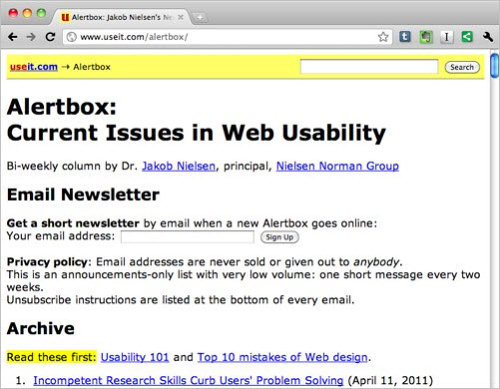
By setting your ego aside, establishing a good relationship and taking control of the process you can usually get the client to sign-off on a design. However, like all things in life, no approach is full proof. In such cases I have a couple of fallback positions which have been known to work.
What To Do If A Client Digs In Their Heels?
Some clients can be very dogmatic and no amount of careful management can lead them down the right road. In such situations I use three techniques in the following order:
- Suggest testing. If the client wants one thing and you recommend another, suggest testing both approaches with real users. It’s hard to say no when services like verifyapp.com are so cheap. Often clients will give in at this point because they don’t wish to be proved wrong.
- Ask to have your name removed from the project. Often client’s don’t believe that a change they are suggesting is really that bad a thing. They just think we are being overly precious. One way to show how serious you are about your concerns is to say that if the clients’ changes are implemented you would like your involvement with the project to be kept secret. As designers are normally so keen to promote their work, this makes a client realize how unhappy you are.
- Give the client what he or she wants. It is important to remember at the end of the day that it is the client’s website, not yours. I know that some people advocate walking away from a project before compromising their ‘standards’. However, personally I think that is unprofessional in all but the most extreme cases. If a client is really insistent and unwilling to listen to reason I will deliver the site to the exact specifications they requested.
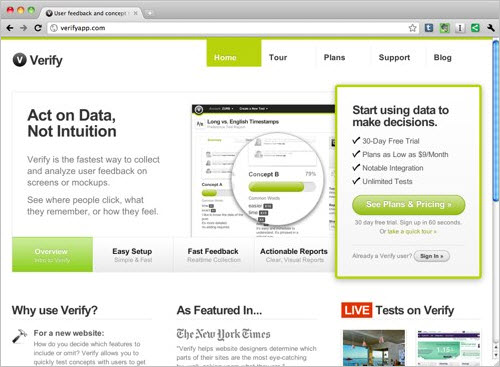
I imagine this post will generate mixed reactions. Some of what I have said here seems to be manipulative. I believe it is simply nudging the client in the right direction to give them what they ultimately want — a great website.
Other things won’t sit well with some designers. Suggesting you give the client what they want or letting them win even some battles might smack too much of compromise. Nevertheless, in my opinion this is what a collaborative relationship is about.
However, I am interested to hear your approaches. Where do you draw the line between what you believe is right and what the client wants? What techniques do you use for nudging the client in the right direction? Do you set limits on revisions or the client’s involvement in the process? Let me know in the comments.
Further Reading
- Keys To Better Communication With Clients
- 8 Strategies For Successful Relations With Clients
- How To Convince The Client That Your Design Is Perfect
- Designing With Your Clients


 Flexible CMS. Headless & API 1st
Flexible CMS. Headless & API 1st





